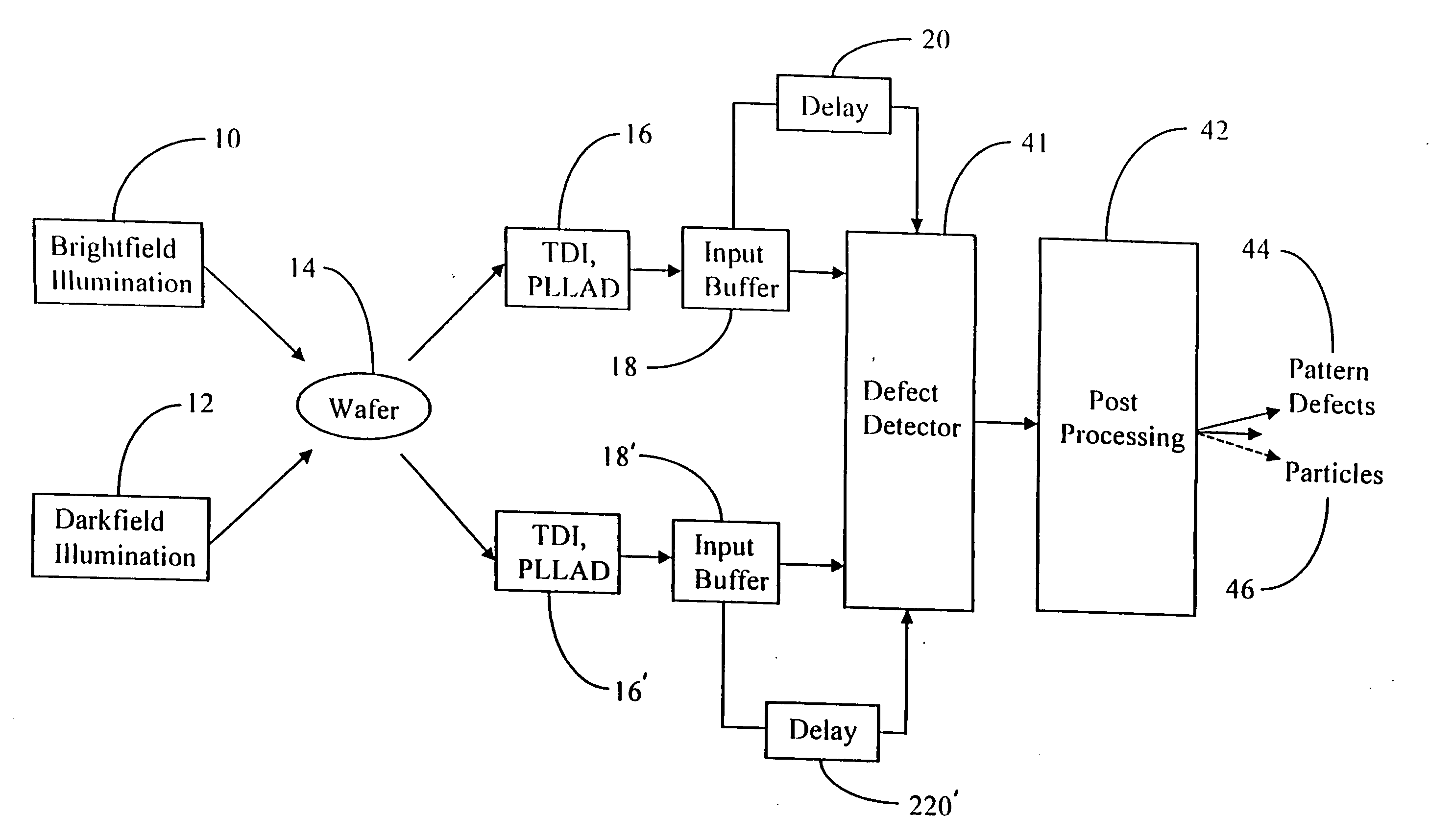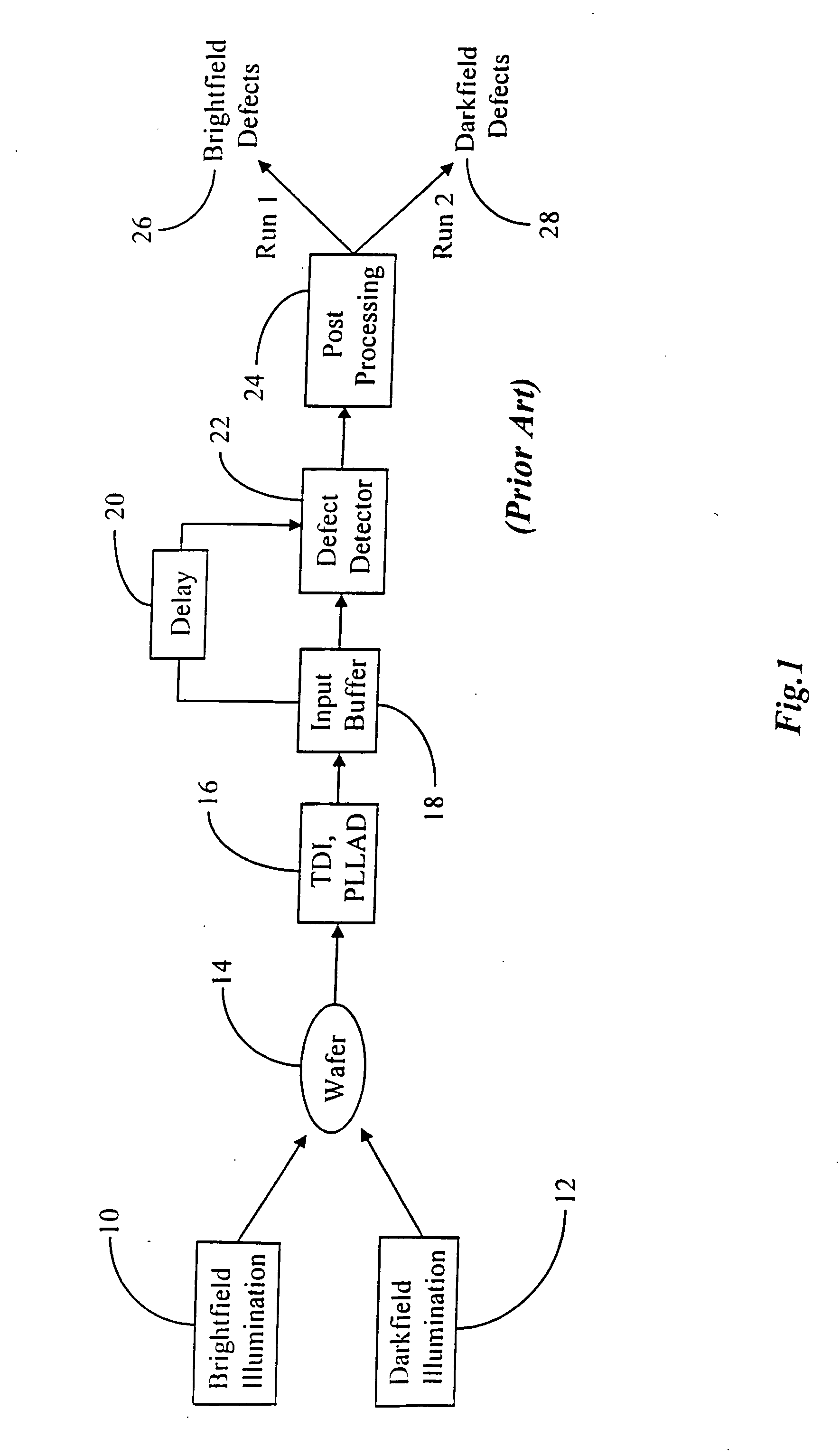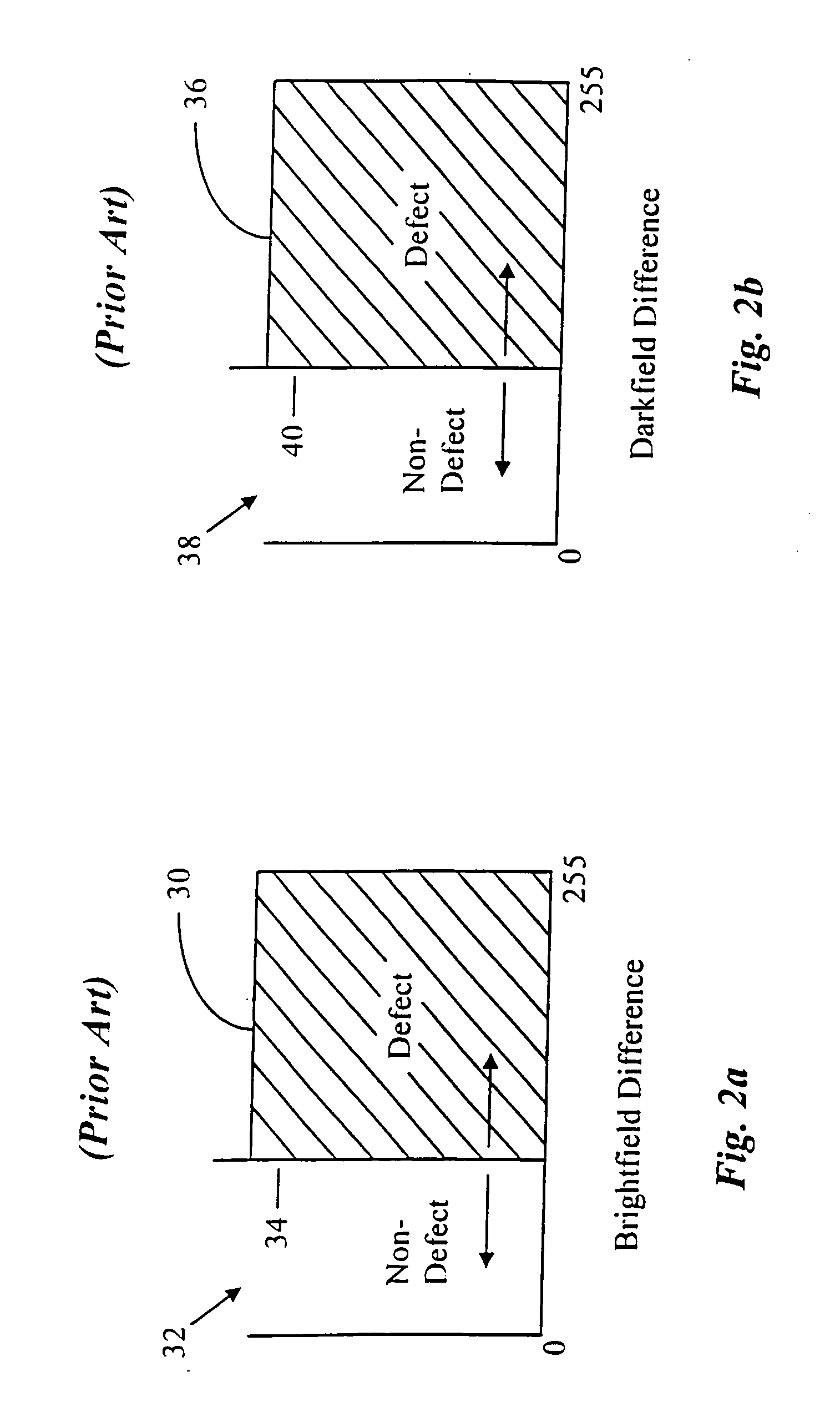Optical inspection of a specimen using multi-channel responses from the specimen
- Summary
- Abstract
- Description
- Claims
- Application Information
AI Technical Summary
Benefits of technology
Problems solved by technology
Method used
Image
Examples
Embodiment Construction
[0036] Historically, the majority of defect inspection machines perform using either brightfield or darkfield illumination, not both. Thus the typical prior art machines are as shown in FIG. 1 with either brightfield or darkfield illumination.
[0037] In the system of FIG. 1, wafer 14 is illuminated by the appropriate brightfield or darkfield light source 10 or 12, respectively. During operation, sensor 16, shown here as a TDI (time delay integration) with PLLAD (Phase Locked Loop Analog to Digital conversion), captures the image from wafer 14 and loads a signal representative of that image into input buffer 18, (e.g., RAM). From buffer 18 the data is fed to defect detector 22 where the data from the sample being inspected is compared to a similar sample or reference wafer under control of delay 20 which provides the timing to allow for the die-to-die or cell-to-cell comparison by defect detector 22. The data from defect detector 22 is then applied to post processor 24 where the sizi...
PUM
 Login to View More
Login to View More Abstract
Description
Claims
Application Information
 Login to View More
Login to View More - R&D
- Intellectual Property
- Life Sciences
- Materials
- Tech Scout
- Unparalleled Data Quality
- Higher Quality Content
- 60% Fewer Hallucinations
Browse by: Latest US Patents, China's latest patents, Technical Efficacy Thesaurus, Application Domain, Technology Topic, Popular Technical Reports.
© 2025 PatSnap. All rights reserved.Legal|Privacy policy|Modern Slavery Act Transparency Statement|Sitemap|About US| Contact US: help@patsnap.com



